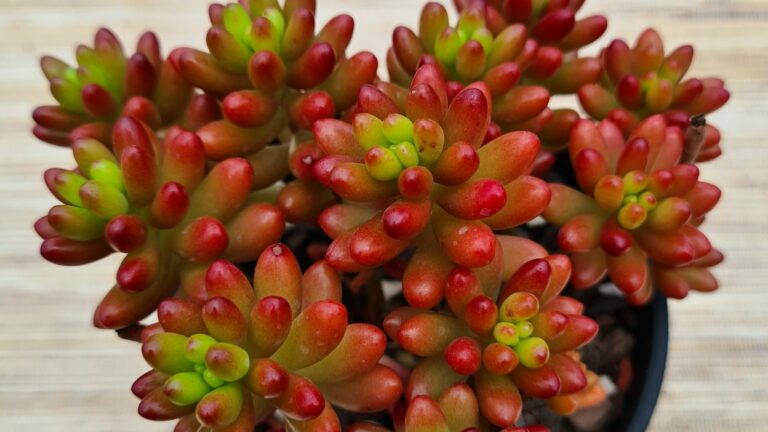The Jelly Bean plant – also known as Pork and Beans or Christmas cheer – is a wonderful, low-maintenance small plant that is native to Mexico and is part of the Crassulaceae family. Because of its popularity, many people grow it indoors all around the world.
Many beginner gardeners choose the Jelly Bean plant because they are perfectly fine with infrequent watering and a total lack of pruning. They just like to be left alone and look pretty. Probably the only thing that you need to keep in mind is that they do not tolerate frost. Bringing them indoors during a harsh winter is a must.
Care
As stated before, the Jelly Bean plant is a very low-maintenance plant that requires very little care to stay alive. However, there are a few things you should know:
When it comes to light preference, the Jelly Bean plant simply loves direct sunlight. When it gets enough light, its leaves will turn orange. If your plant is completely orange, it just does not get enough light, so you should move it to a different location.
The Jelly Bean plant is also very tolerant of different types of soil as long as they are well-drained. Sandy, neutral or alkaline conditions are the best. You do not need to worry about watering very much, just wait until the soil is dry or the leaves look puckered. Once every week or 10 days is fine indoors, but if your plant sits outside, irregular rainfall will do the job
One more thing –> make sure you bring them in before the first frost!
Common pests
- mealybugs
- scale
Propagation
The other best thing about the Jelly Bean plant is that it is extremely easy to propagate it. Even a fallen leaf of this plant can grow roots and grow into an individual plant. You can also propagate a plant from cuttings.
If you want to go the easier way, just take the leaf of a Jelly Bean plant, put it on top of well-drained soil, and place it in indirect light. You do not need to water the leaf until it develops roots.
Frequently Asked Questions
Jelly Bean plants do not require lots of water to thrive. Watering them once every 7 – 10 days is preferred.
How much sunlight does the Jelly Bean plant need?
Jelly Bean plants love sunlight, so they need at least 6 hours of direct sunlight every day.
Why is my Jelly Bean plant dying?
The most common problem with Jelly Bean plants is that they do not tolerate lots of water. Let the soil dry out, wait a few days, and only water them after that.
Is the Jelly Bean plant toxic to pets?
Unfortunately, the Jelly Bean plant is toxic to pets and humans as well.
